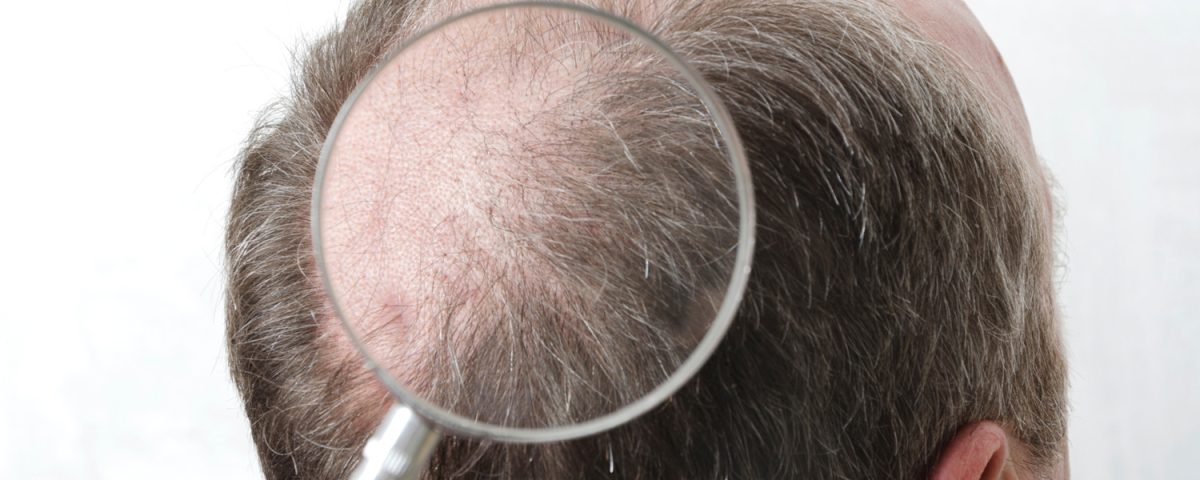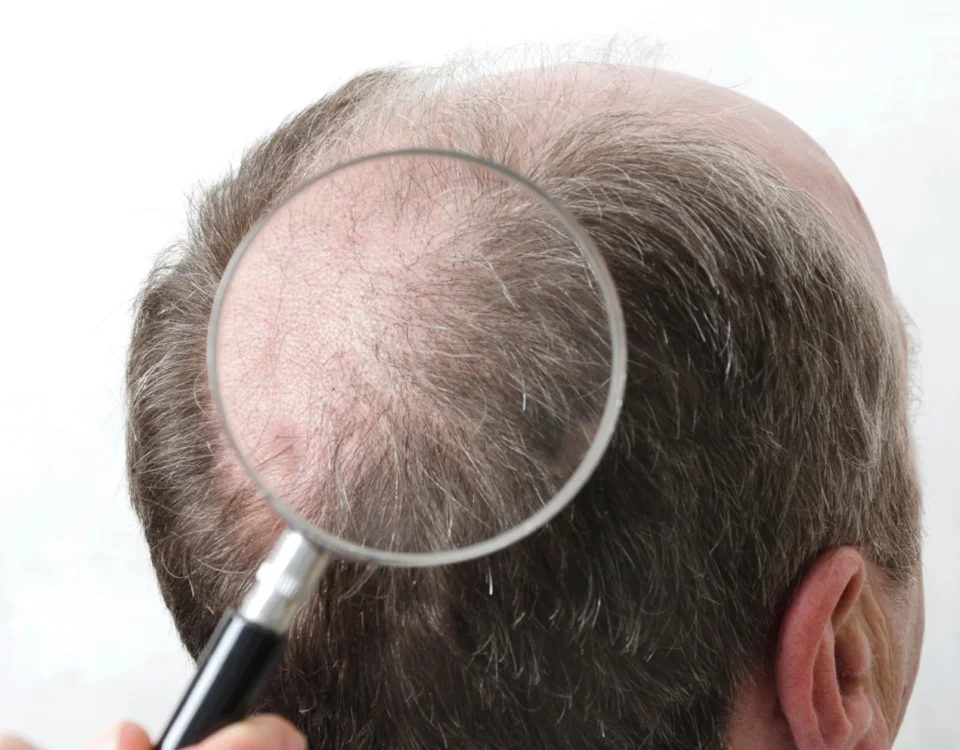
Hair transplant in Istanbul? – Not necessarily. Welcome to Wrocław!
5 April 2024
Hair Transplant Glossary
9 April 2024The most common cause of hair loss is Androgenetic Alopecia (AGA), affecting over 80% of men and around 42% of women.
Unfortunately, as we age, the incidence of this condition increases. Androgenetic alopecia affects at least 50% of men under 50 and over 70% of men over 70. For women, it occurs at a slightly lower rate, affecting approximately 30-40% of women over 50. But what exactly is androgenetic alopecia? What are the differences between hair loss in men and women? And is a hair transplant effective for this type of hair loss? Read on to dive into this fascinating topic.
Why do we lose hair? What causes it?
Hair loss is a natural physiological process and shouldn’t be immediately equated with baldness. We lose about 100 hairs a day, which often goes unnoticed since our hair grows in various stages. These stages include growth, resting, and shedding. Hair grows asynchronously, meaning that each hair is at a different stage of its life cycle at any given time. Usually, over 70% of hair is in the growth phase. Unfortunately, due to various factors, the balance between these phases can be disrupted, leading to a higher rate of shedding than growth. This results in excessive hair loss, which can eventually lead to baldness.
When Genetics Play Tricks!
Androgenetic alopecia is primarily genetically determined. If hair loss has affected close relatives, your risk of experiencing this type of hair loss is significantly higher. So far, doctors haven’t identified a single gene responsible for this condition. Instead, a set of genes and their various combinations dictate the severity and age of onset. The primary role in this process is played by testosterone, which can strongly affect hair follicles, causing them to shrink and eventually shorten, resulting in thinner, shorter hair and visibly less volume.
Are there other causes of androgenetic alopecia? What about hormones?
Hormones also play a significant role in hair loss, especially testosterone and its metabolite, dihydrotestosterone (DHT). Testosterone converts to DHT under the influence of the enzyme 5α-reductase. This hormone can shrink hair follicles and shorten the growth phase, leading to gradual thinning of the scalp hair.
Other Causes of Androgenetic Alopecia:
- Medication (especially hormone-regulating drugs)
- Sports supplements
- Smoking
- STRESS! While stress alone doesn’t cause baldness, it has been observed to significantly impact the progression and severity of symptoms in those with this condition.
Differences between Androgenetic Alopecia in Men and Women:
In men, symptoms typically appear in specific patterns. Androgenetic alopecia usually starts in the fronto-temporal area, commonly called the “receding hairline,” between ages 20 and 30. The crown area follows, and eventually, the back of the head. However, hair around the nape area generally remains unaffected because this region has fewer androgen receptors than the crown and temples.
In women, genetically driven hair loss leads to the miniaturization of hair follicles, disrupting the hair cycle and shortening the growth phase. It often becomes noticeable during hormonal changes like menopause. Additionally, the use of strong detergents found in shampoos, dyes, and hair care products can negatively impact hair health and contribute to hair loss.
So what to do if you’re affected by androgenetic alopecia?
The first step is to consult a specialist, either a trichologist or dermatologist, who will gather the necessary information, perform trichoscopy, and recommend the most suitable treatment.
Treatment Methods for Androgenetic Alopecia:
- Oral and topical treatments
- Injections with growth-supporting agents
- Needle mesotherapy
- The most effective method that provides lasting and natural-looking results is the FUE hair transplant.
The FUE (Follicular Unit Extraction) technique is the most advanced hair transplant method, using a Sapphire blade—the latest surgical tool in this field. This method allows for the transplantation of up to 5,000 grafts, with each graft containing 1 to 3 hairs. Hair follicles are individually extracted after applying local anesthesia. Micro-extraction is performed with a micro motor tool that creates tiny incisions from 0.6 to 1 mm in diameter. Channels are carefully opened by the doctor to maintain natural hair appearance and density, considering the angle and growth direction of the hair.
At Dr. Art Clinic, we also use the VITA method with each hair transplant. This involves placing the grafts in a specialized device where they receive a cooling mist of saline solution with vitamins, minerals, and amino acids.
Are you struggling with excessive hair loss? Or perhaps you want to assess your hair’s health? Book a consultation with our trichologist in Wrocław today!






